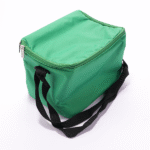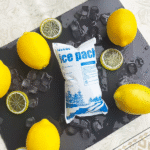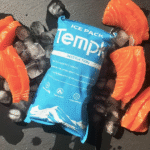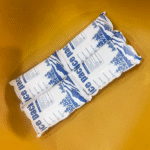Dry ice pack sheet shipping is a critical solution for transporting temperature-sensitive goods like pharmaceuticals, biotech samples, and frozen foods. The ability to maintain ultra-low temperatures without the mess of melted ice makes dry ice an ideal choice for express deliveries. In this guide, we’ll explore everything you need to know to ensure safe and effective dry ice shipping, from proper packaging to the latest trends in logistics.
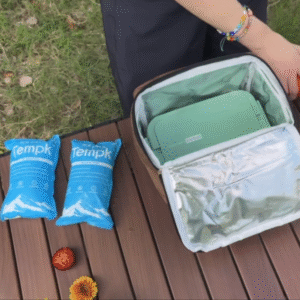
-
What is dry ice pack sheet shipping, and why is it essential for fast deliveries?
-
How can you use dry ice pack sheets for secure and safe shipping?
-
What are the key advantages of dry ice pack sheets in cold chain logistics?
-
What are the best practices for shipping with dry ice pack sheets?
What is Dry Ice Pack Sheet Shipping, and Why is It Essential for Fast Deliveries?
Dry ice pack sheet shipping utilizes sheets of solid carbon dioxide to maintain extremely low temperatures during transit. These sheets sublimate directly from solid to gas, keeping goods below freezing for extended periods without leaving moisture behind. This makes them particularly useful for shipping perishable items that must remain frozen, such as vaccines, meat, seafood, and biotech samples.
Key Insight: Dry ice sublimes at -78.5°C (-109.3°F), which is significantly colder than traditional ice, making it ideal for shipments requiring below-freezing conditions.
Why Choose Dry Ice Pack Sheets?
-
Superior Temperature Control: Dry ice maintains subzero temperatures for up to 72 hours, preventing spoilage or degradation of goods.
-
Environmentally Friendly: Unlike gel or water ice, dry ice leaves no liquid residue and sublimes into carbon dioxide, which is non-toxic and eco-friendly.
-
Compact and Efficient: Dry ice pack sheets are lightweight, reducing the overall weight of shipments and improving efficiency in packaging.
| Feature | Benefit | Impact on Shipping |
|---|---|---|
| Temperature Control | Keeps items frozen for up to 72 hours | Preserves product integrity and freshness |
| Eco-Friendly | No liquid residue | Meets sustainability standards |
| Compact Design | Easy to store and handle | Reduces shipping costs and packaging time |
How to Safely Ship with Dry Ice Pack Sheets?
Shipping with dry ice pack sheets requires careful handling and the right equipment. Here are some key considerations to ensure a safe and efficient shipping process:
-
Proper Packaging: Dry ice pack sheets must be placed inside insulated containers to prevent external heat from affecting the goods. Ensure the container allows gas to escape while preventing moisture from contaminating the goods.
-
Weight Considerations: The amount of dry ice used should be proportional to the shipment duration. A general rule is 1-2 pounds of dry ice per 24 hours of shipment.
-
Labeling and Compliance: Always label packages with “Dry Ice” or “Carbon Dioxide, Solid,” and include the appropriate handling information per DOT and IATA guidelines.
Key Tips for Safe Shipping with Dry Ice Pack Sheets:
-
Ventilation: Ensure containers are vented to allow CO₂ gas to escape. Using airtight containers is prohibited due to the risk of pressure buildup.
-
Protective Gear: Handle dry ice with insulated gloves and goggles to avoid frostbite or burns.
-
Monitor Temperature: Implement temperature monitoring devices to ensure goods are maintained at optimal temperatures during transit.
Best Practices for Dry Ice Pack Sheet Shipping
When shipping with dry ice, following the best practices ensures that your temperature-sensitive products remain intact and are delivered on time:
Layering Dry Ice for Optimal Cooling
For optimal cooling efficiency, always layer dry ice at the bottom of the shipping container. This setup ensures that the cold air rises from the bottom up, maintaining a consistent temperature throughout the journey.
-
Use Insulation: Pair dry ice with high-quality insulation like vacuum-insulated panels (VIP) to slow down the sublimation process and maintain cold temperatures.
-
Allow for Ventilation: Ensure that packaging has enough space or vents for CO₂ gas to escape to avoid the risk of container rupture.
Monitoring and Adjusting Conditions
-
Temperature Data Loggers: Use real-time temperature monitoring systems that alert you if the temperature exceeds the threshold, helping you mitigate risks during transit.
-
Monitor Sublimation Rate: Track the amount of dry ice used and adjust based on the length of transit and external temperature conditions. This helps to prevent waste and ensure proper cooling.
What are the Benefits of Dry Ice Pack Sheets in Cold Chain Logistics?
Dry ice pack sheets are an essential part of the cold chain, offering several advantages:
-
Precise Temperature Control: Dry ice is ideal for maintaining temperatures as low as -78.5°C, which is necessary for certain pharmaceutical products, vaccines, and frozen foods.
-
Reduced Spoilage: By maintaining consistent temperatures, dry ice prevents spoilage and preserves the quality of sensitive products.
-
Faster Shipments: Dry ice is lightweight and efficient, which reduces shipping times and costs, particularly when fast delivery is crucial.
How Do Dry Ice Pack Sheets Compare to Other Cooling Methods?
Dry ice offers distinct advantages over other common cooling methods like gel and water ice. Here’s a quick comparison:
| Cooling Method | Temperature Range | Duration | Moisture | Ideal Use Case |
|---|---|---|---|---|
| Dry Ice Pack Sheets | -78.5°C (-109°F) for 12-72 hours | Long duration | None (Sublimates) | Long-distance shipments requiring deep-freezing |
| Gel Packs | 0°C (32°F) for 12-24 hours | Short duration | Releases liquid | Short-distance shipments where cooling is required, but freezing isn’t |
| Water Ice | 0°C (32°F) for 6-24 hours | Very short duration | Melts into liquid | Suitable for less temperature-sensitive goods |
Common Applications of Dry Ice Pack Sheets
Dry ice pack sheets are widely used across several industries for their superior cooling and efficiency:
-
Pharmaceuticals: Transporting medications, vaccines, and biological samples that require stable, ultra-low temperatures.
-
Frozen Foods: Shipping perishable food items like seafood, meat, and ice cream while maintaining their quality.
-
Biotech Samples: Sending sensitive biological specimens that need to stay frozen during transit.
2025 Trends in Dry Ice Shipping
Latest Developments in Dry Ice Shipping Technology
-
AI-Driven Temperature Management: AI algorithms and IoT sensors monitor dry ice usage, optimize shipping routes, and provide real-time updates, enhancing the efficiency and safety of cold chain shipments.
-
Sustainable Dry Ice Production: Innovations in carbon capture are leading to carbon-neutral dry ice, making the shipping process more eco-friendly.
Market Insight: As the cold chain logistics market grows, driven by increasing demand for fast deliveries of sensitive goods, businesses are looking for cost-effective, reliable solutions like dry ice that provide efficient cooling without the complexity of refrigeration systems.
Frequently Asked Questions (FAQ)
Q1: How long can dry ice pack sheets keep items frozen?
Dry ice can keep items frozen for 12-72 hours, depending on factors such as the amount used, the quality of insulation, and the transit conditions.
Q2: Can I use dry ice for international shipping?
Yes, dry ice can be shipped internationally. However, you must comply with specific regulations regarding labeling and packaging, especially for air shipments.
Q3: How much dry ice should I use for a 24-hour shipment?
Typically, 1-2 pounds of dry ice per 24 hours of shipping are sufficient for most shipments, but it’s essential to adjust based on the shipment’s size and the ambient temperature.
Conclusion and Recommendations
Dry ice pack sheet shipping is an ideal solution for transporting temperature-sensitive goods safely and efficiently. By using the right amount of dry ice, ensuring proper packaging, and adhering to regulatory guidelines, you can guarantee that your products remain at the required temperature and arrive on time.
Next Steps:
-
Calculate the dry ice requirements based on the shipment’s size and duration.
-
Use high-quality insulation to extend the duration of cooling.
-
Choose a reliable shipping carrier with expertise in handling dry ice shipments.
About Tempk
Tempk is a leading provider of cold chain solutions, specializing in dry ice pack sheets for industries such as pharmaceuticals, biotech, and food. Our solutions are designed to ensure safe, fast, and efficient shipping for temperature-sensitive goods, helping our clients meet the challenges of modern cold chain logistics.
Call to Action: Contact Tempk for expert advice on optimizing your cold chain logistics and ensuring the safe transport of your perishable goods.
















